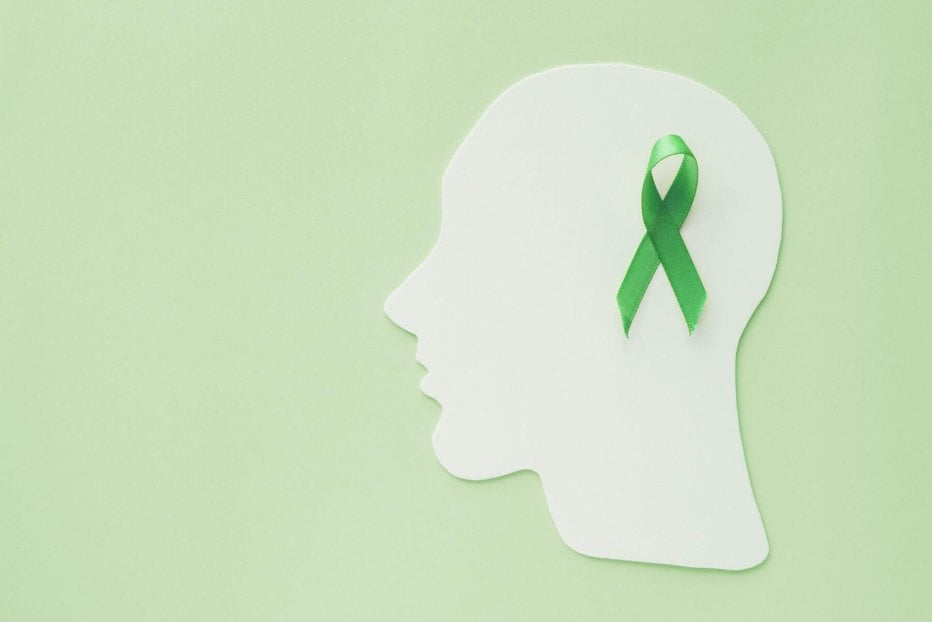Beyond Mental Health Awareness

By: Tori Mikulan
As first responders, we often talk about depression, anxiety, and PTSD, conditions fairly common within our profession. Given the stressors of our job, a high incidence isn’t surprising.
The truth is, you never really know what someone else is going through. Colleagues could be living their best lives or they could be teetering at the edge of a mental health crisis – either way, you might have no idea. This is why it is important to respect each other’s wellness and keep an open mind.
We don’t typically discuss how pre-existing mental illnesses or issues can exacerbate or result in depression, anxiety or PTSD, and vice versa. Not discussing some of these other conditions can continue stigma, which may deter some with potentially manageable conditions from getting treatment at all. Which could lead to more severe symptoms with potentially dire consequences that didn’t need to happen.
Obsessive-compulsive disorder (OCD), bipolar disorder, and eating disorders are examples of conditions that are commonly misunderstood and remain heavily stigmatized.
Facts
OCD
- According to the National Institute of Mental Health, approximately 1.2% of US adults had OCD in the last year.
- Obsessions in this form are defined as “repeated thoughts, urges or mental images that cause anxiety.” Typically, people with OCD have a fear of germs or need to have things in perfect order. Other common symptoms include unwanted forbidden, taboo or aggressive thoughts towards others or self.
- Compulsions are repetitive behaviors a person feels the urge to do in response to an obsessive thought, such as excessive cleaning or handwashing, repeatedly checking things or compulsive counting.
- Someone with OCD generally cannot control these thoughts and they significantly, and negatively impact their daily life, spending at least one hour per day on them.
Bipolar Disorder
- Formerly known as manic depressive disorder, bipolar disorder causes shifts in moods that cause emotional highs and lows. These can affect energy, activity levels, concentration, and negatively impact everyday life.
- Three types of bipolar disorder (Bipolar 1, Bipolar 2, and Cyclothymic) are characterized by the number and occurrence of emotional episodes experienced: manic, hypomanic, and depressive.
Eating Disorders
- There are several types of eating disorders that impact relationships with food, exercise, or body image.
- According to the American Psychiatric Association, anorexia nervosa, bulimia, and binge eating are the main types of eating disorders. It is not uncommon for eating disorders to coexist with other psychiatric conditions such as mood and anxiety disorders, OCD, and alcohol and drug addiction problems.
- Behaviors related to eating disorders (restrictive eating, food avoidance, purging, laxative abuse, compulsive exercise, etc.) can manifest in ways that are similar to addiction.
- While disorders such as orthorexia (obsession with the quality of one’s food) and exercise compulsion are not formally recognized by the DSM-5 at this time, the National Eating Disorders notes that these indicate unhealthy, harmful relationships with food and exercise and that awareness continues to increase.
- A lack of formal diagnostic criteria makes it difficult to pinpoint how many people have orthorexia and if it is a stand-alone disorder, a type of existing eating disorder, or a form of OCD. Some studies have indicated a relationship between OCD and orthorexia.
Bipolar Disorder
Amanda*, a 28-year-old volunteer firefighter in New England who began volunteering this past year, was diagnosed with bipolar disorder seven years ago. It took “a lot of time and trials of treatment plans,” but she has a well-managed condition with a medication regimen and environmental routine. Amanda is pursuing a paramedic education and hopes to join a career fire department.
She has noticed that her condition mostly impacts her self-esteem, especially as she goes through the learning process. Despite continued reassurance from fellow firefighters and officers that she is not expected to know everything perfectly (and that is precisely the purpose of training), she says she is hard on herself for not knowing the answers to everything and she takes that home, criticizing her performance or wondering if she is silently being judged by or disappointing her peers. Amanda has noticed that this can impact her energy levels and impact other aspects of her life, although typically managed with self-care.
Close friends outside the fire service are very supportive of her condition, but she has not told anyone within her department.
“I worry about being open about it in the fire service, specifically because of the stigma surrounding bipolar disorder. I want my team to have full trust in me, and I fear if they knew, they would be reluctant to work alongside me, thinking I would be unstable or unsafe. It doesn’t affect my treatment plan, but I am hesitant to be transparent about my emotions – specifically about fire and EMS because those are topics I can’t connect with my close friends about.”
OCD and Eating Disorders
A 30-year-old firefighter from the Chicago area, a woman we will call Sophie, was diagnosed with OCD when she was nine years old and developed serious body image issues and disordered eating when she was around 20. Managing these has resulted in some unique challenges and careful balancing acts, in an industry with many potential triggers to both.
Sophie says she is in a good place with her OCD and that it doesn’t impact her on the job. At the fire department, she says she has received “very occasional, very light teasing” but also that she is not the only one there with OCD.
The “gross” element of the job (bodily fluids, carcinogens, etc.) could, unsurprisingly, present a challenge for someone with OCD. However, Sophie says that PPE is “very reassuring” to her OCD mind, as is knowing she is doing everything within her control to be safe, while accepting that the job is never completely safe. Understanding the potential OCD triggers and risks associated with firefighting is essential for healthcare providers to understand in order to provide treatment.
Sophie’s comfort in sharing her experience doesn’t, at this time, extend to her struggles with food and body image and she says, “Not only do I feel less able to handle any kind of teasing about that part of my life, taking care of your body in this job is serious business, and I don’t want my ability to do so to come into question for any reason.”
Sophie says that, prior to her recovery, she would have been horrified by how her body changed for the job.
“I’ve become more muscular, I weigh more, I’ve outgrown clothes as I’ve grown stronger. It’s an unusual experience, going from doing everything I could to become smaller, to diving headfirst into a culture where everyone wants to be bigger and stronger. Recovering from disordered eating adds a layer of complexity to navigating firehouse food/fitness culture. On one end of the spectrum, there are the guys who jump from fitness and diet fads, and on the other end, there are guys who rarely work out and eat a lot of junk at the firehouse. Somewhere in the middle, there’s a balance for me that I’m still figuring out.”
Sophie and Amanda are just two examples of first responders who manage mental illness but remain concerned about their colleagues learning of their conditions, fearing that with lack of education, stereotypes and stigmas, their peers will doubt their capabilities. Some of these concerns, while not limited to the realm of public safety, are rooted in our culture.
Managing Balance
It is a difficult balance to consider. Certainly, there are individuals whose mental illness could disqualify them as firefighters – or explain an inadequacy or struggle a responder may have in fulfilling their role. But there are physical ailments that can do the same, and for some, those conditions won’t negatively impact their abilities. The same goes for mental ailments.
Some of your peers may be carrying unnecessary burdens because of the threat of a stigma and its response. There may never be an indication of their condition, but they are weighing themselves down because of a “what if” that is rooted in a lack of understanding. It doesn’t have to affect who they are because they’re afraid of being “found out,” but it can definitely have a negative impact.
Education and an open mind are how we combat this. There are so many ways we can talk about minimizing and eliminating stigma. But we need to do more than talk. Action doesn’t always need to be these big, sweeping moments. It can be as simple as listening instead of talking or taking the time to learn. There is so much to tell and learn about OCD, bipolar disorder, and eating disorders – and then there are so many more conditions. We’re never going to know it all, but we can all do our part to learn more.
The Diagnostic and Statistical Manual of Mental Disorders (DSM-5) is a handbook published by the American Psychiatric Association (APA) and used by health professionals to help identify and diagnose mental illnesses. Last published in 2013, it contains information on almost 300 different mental disorders. And there are conditions with mental health elements not recognized by the DSM-5. We’re only ever going to have a sliver of understanding. But that’s okay.
What is important is how we understand the individuality of a person’s mental health – as unique as their fingerprint – and recognize that mental health and disorders don’t fit into neat little boxes. We need to be considerate of how everyone’s wellness varies.
An open mind, a willingness to learn, and a consideration for our culture are wonderful ways to do this.
Podcast
Contests & Promotions













